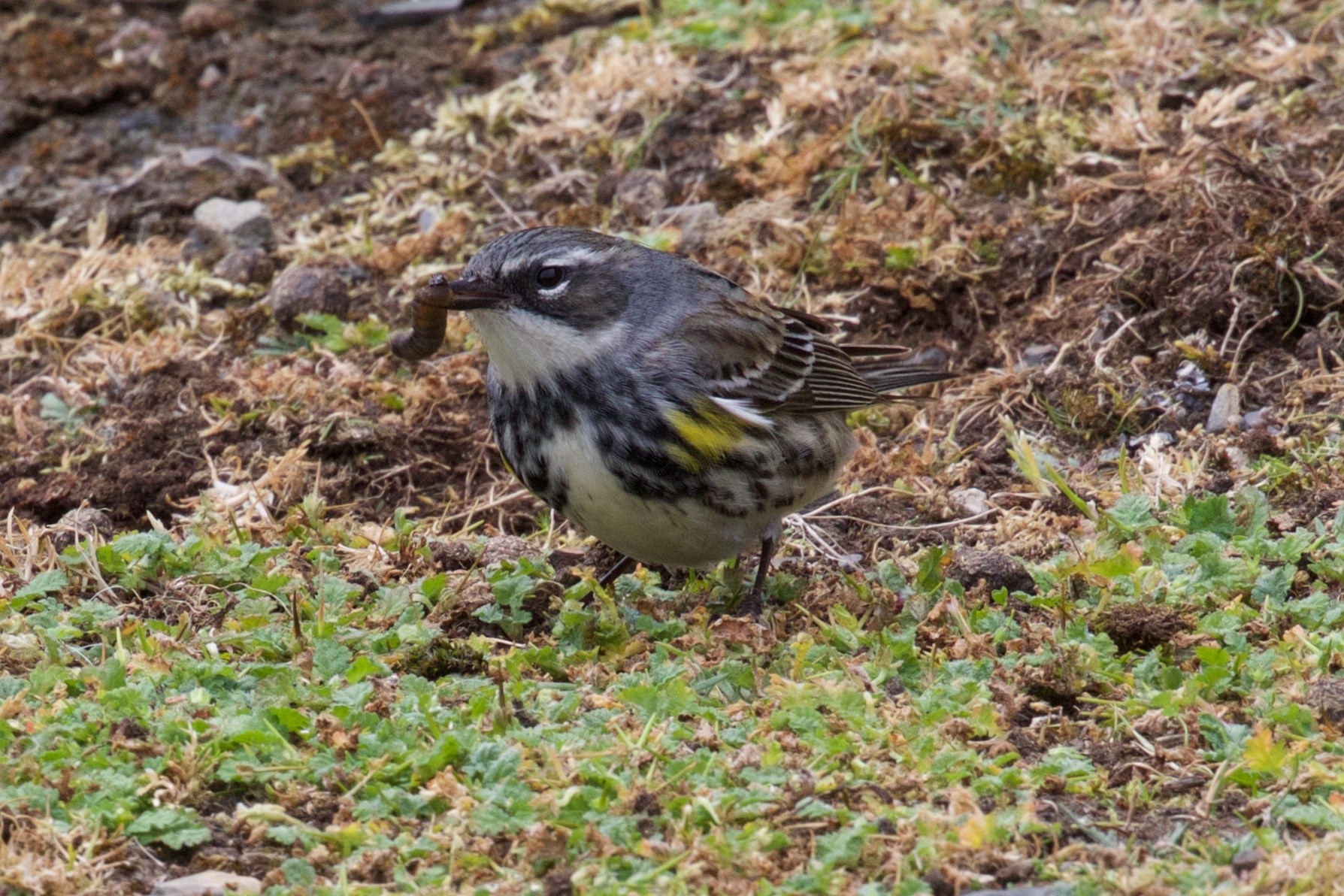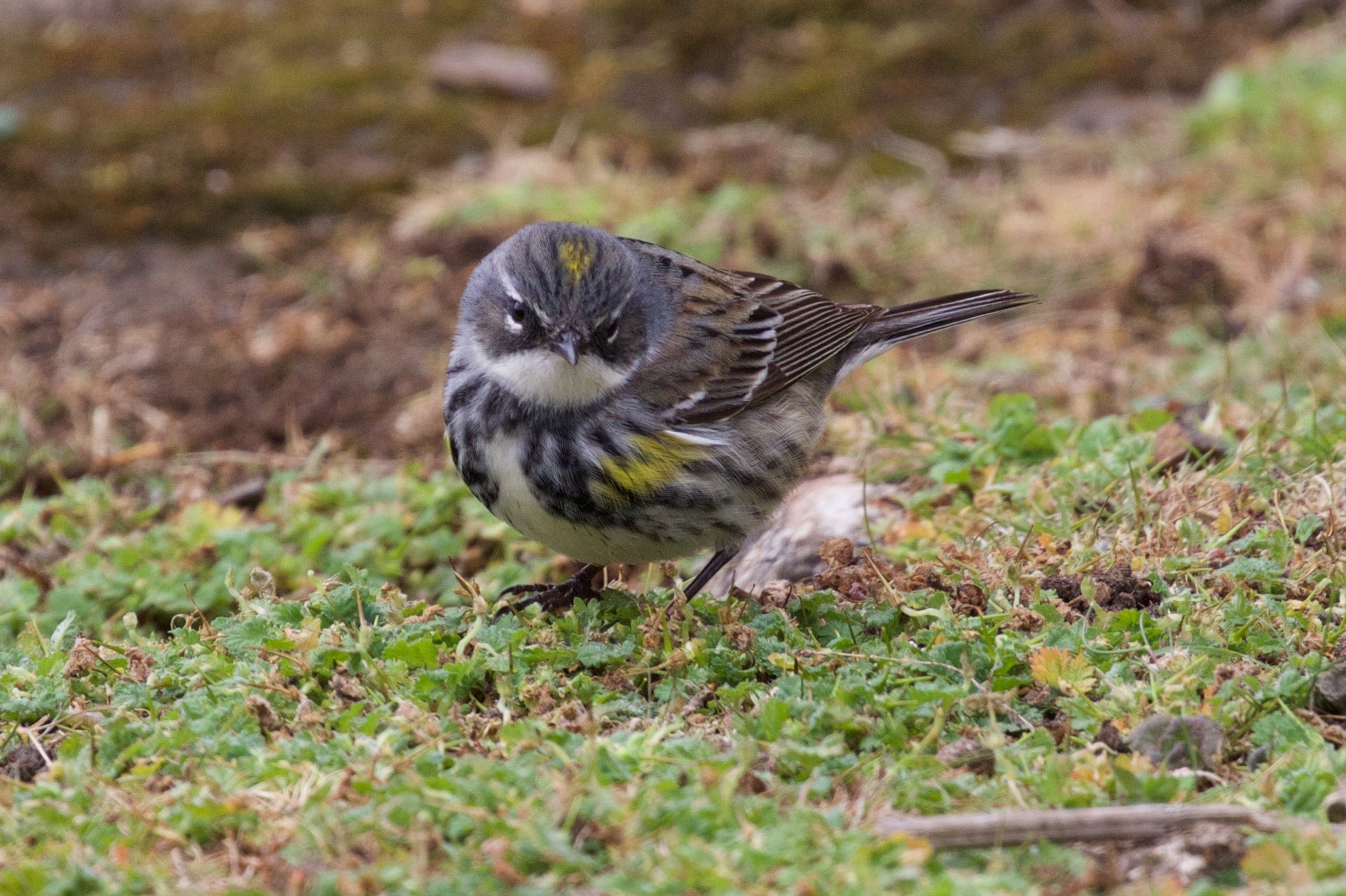It was the last day of May and in typical fashion I was racing out of the Ramsey Island farmhouse, heading for the coast and my Northern Fulmar productivity study plots. Bolting out the door at 12.15 pm, after a hasty fish-finger sandwich, I nearly missed Jenny Davies and her family chatting to one of my volunteers about a black and white bird they had photographed an hour earlier. Apparently, it was hopping around on the short turf and pebbles outside the toilet block.
I have to confess, my immediate thought was Pied Wagtail, with a pair feeding young outside the compost loos at the time. However, as Jenny peered over the SLR screen there was a mention of yellow feathering – I thought that sounded interesting so I nosed in for a look. They had already realised it was something of significance and had sent the image to a friend, who had confirmed the ID as Myrtle Warbler and that they should tell the warden!

The Myrtle Warbler was first seen on the short turf and pebbles outside the toilet block (Pete Ramsey).
There are two species that Ramsey staff are familiar with: Indigo Bunting and Myrtle Warbler – the island hosted both British and Welsh firsts of these species in 1996 and 1994 respectively. I'd also seen the warbler in Costa Rica. It took me a minute to compute that this image had been taken on the island and also that I was standing merely 200 m from where it had been seen.
We raced up the hill, turning into the yard and – thankfully – picked up the bird immediately. It was a similar size to Dunnock, with a striking white throat, black-streaked flanks and yellow patches on the breast sides. It was so fast as it moved on the slate roof of the pig sties that I almost lost my lunch. It then dived up and over the buildings, showing the yellow rump and white on the outer tail feathers, before promptly disappearing into the vegetated cliff on the east side.
The four of us tried to locate it for some 20 minutes but to no avail, and so the Davies' continued with their curtailed walk. During that time, I'd managed to make several phone calls and sent back of camera photos to friends and colleagues, while also managing to Tweet with cold, shaky hands. I'd also given Jenny a massive kiss and hug (with her permission) and sworn an awful lot.

Ramsey Island hosted the first Myrtle Warbler for Wales in 1994 (Pete Ramsey).
By now, I had received several messages and calls confirming the bird as a Myrtle Warbler aging and sexing it as a second-calendar-year male. To my utter relief, I relocated the bird on the chicken coop fence over an hour later, but it was flighty in a strong westerly wind, feeding on the ground with Common Linnets but not enjoying the conditions.
It darted over the barn roof and I ran with it to find it feeding in the shelter of the buildings on the short turf, occasionally in among the nettles, but mainly out in the open. Myself and my intern Pete Ramsey (yes really!) got views down to a few metres and he secured some great photos. At close quarters, the split eye ring in the dark face was striking as were some yellow feathers in the crown.
The Myrtle Warbler was seen by over 50 tourists and volunteers that day and was still present at 7 pm. Unfortunately, no one could make it in time for the 4.30 pm boat I'd arranged. The following morning was cold, wet and foggy, and after no sign early on the bird was briefly seen when visibility improved at 8.45 pm. However, despite the best efforts of myself and the 26 birders who made the boat crossing that morning, the warbler wasn't seen again.
Thanks to Pete for running across the island with his camera and to my 'technical advisors', birder and boyfriend David Astins and the Skokholm Island wardens Richard Brown and Giselle Eagle, for their help ageing and sexing this bird. And above all thanks to Jenny and her family for coming to raise the alarm in the first place.

The Myrtle Warbler was seen by over 50 people on 31 May (Pete Ramsey).


